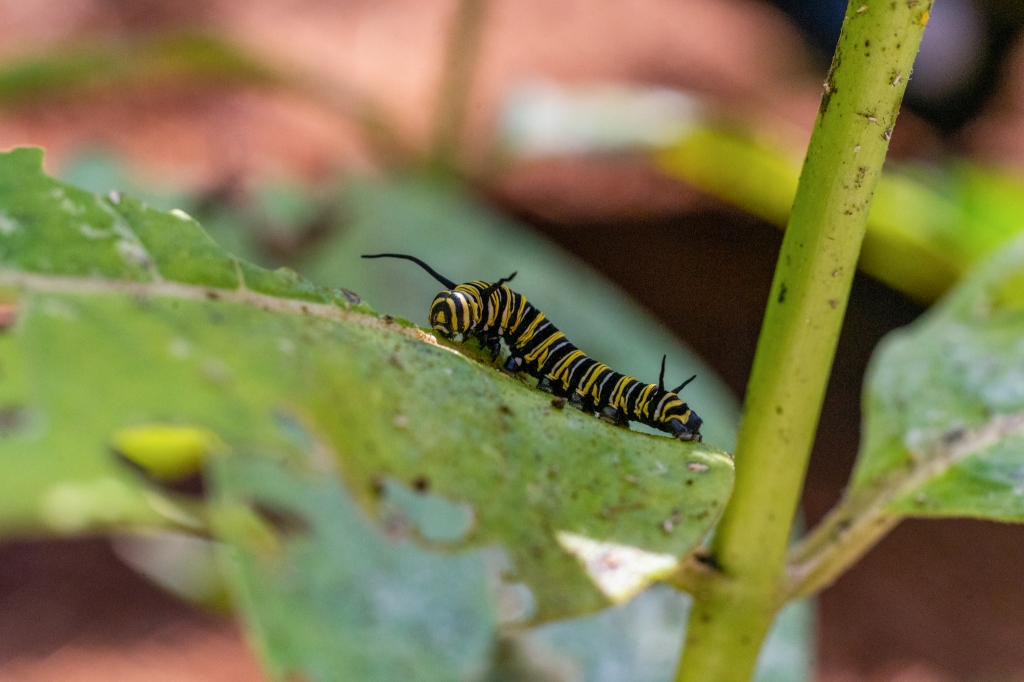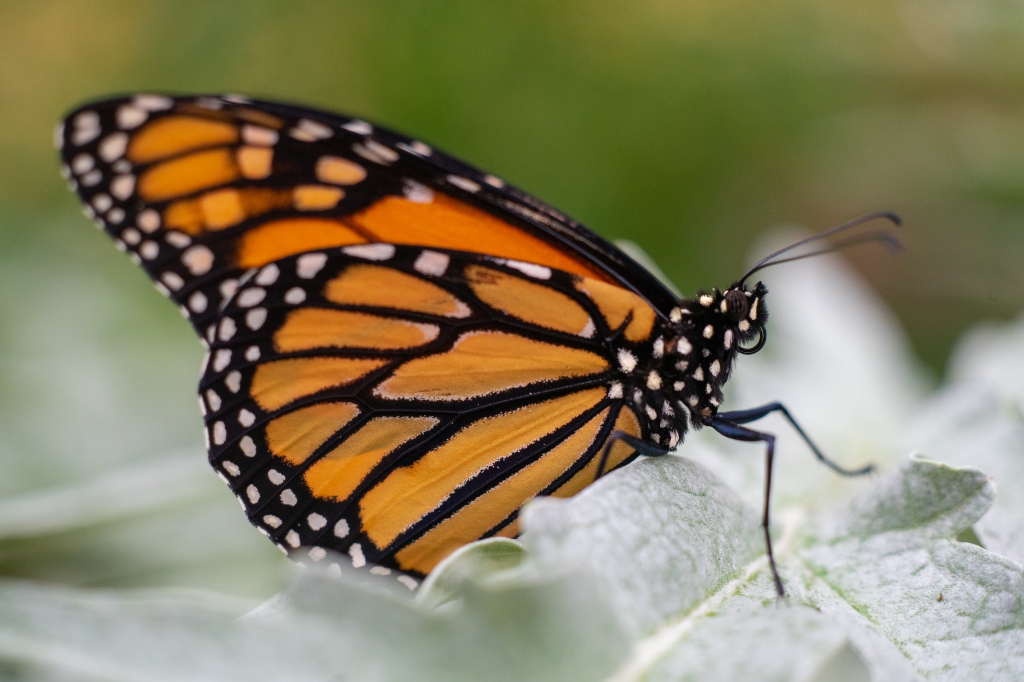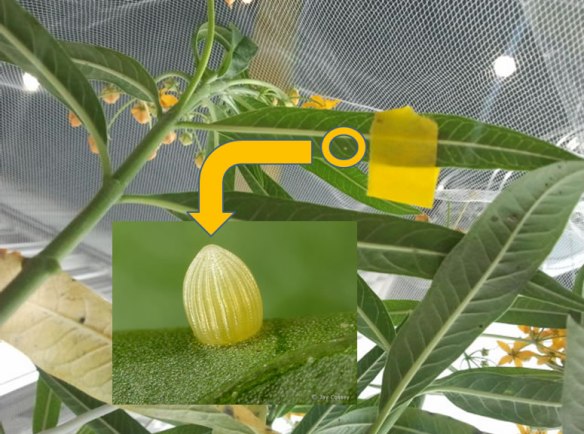The monarch butterfly is probably one of the most recognizable butterflies in North America. They are large, with striking orange and black colors. As of this year, 2022, monarchs are now listed as endangered by the International Union for Conservation of Nature (IUCN). So, what can we do to help save this species?

The Monarch Butterfly
Monarch butterflies only lay their eggs on milkweed, a tall, toxic plant that comes in many different varieties, depending on location. Once hatched, the monarch caterpillar only eats the bitter tasting milkweed until it is time for metamorphosis. Because they have eaten the bitter, toxic milkweed as caterpillars, they then become bitter tasting butterflies. The adult’s bright colors tell predators that they are toxic and unappetizing.
Just like all butterflies, the monarch’s life cycle (egg – caterpillar – chrysalis – butterfly) entails the magical process of metamorphosis. But unique to monarchs, they spend multiple generations in North America during the summer months. These generations have an adult lifespan of 4-5 weeks. The late summer generation will live 5-7 times longer and travel thousands of miles to overwintering sites in Mexico. In central Mexico, tens of millions of monarchs overwinter in less than 20 sites. The combination of temperature and humidity are ideal for these butterflies to huddle together in dense groups throughout the winter. They survive on their fat reserves until spring. In late February and early March, they mate and begin the long journey north. Many make it to Texas where they lay their eggs. The next generation will continue the migration northward. This continues as far north as Canada in May or June. Then, as summer comes to a close the butterflies begin to migrate back to the overwintering spots. Despite how delicate and small the butterflies are, they will fly as high as 4,000 feet in the air, gliding on thermals, and traveling around 12 miles an hour.

Population Numbers Have Been Decreasing Since the 1970s
Amazingly, it is estimated around 970 million monarch butterflies have vanished since 1990. They face many threats, with some exacerbated by human activities. As humans modify the landscape for agriculture and urban development, we alter the native species typically found in those areas. We are also heavily reliant on pesticide use to maintain our green spaces which, is toxic to butterflies. Increasing the diversity of native plants, particularly milkweed and pollinator plants, provides sources of food for butterflies. A diverse diet improves the overall health of our pollinators.
Additionally, the overwintering sites that monarchs use are reducing in availability. Currently there are eleven mountaintops remaining that the butterflies can use. Rising temperatures and habitat destruction limit the available overwinter locations. Fortunately, the remaining sites are part of the United Nations Educational, Scientific and Cultural Organization (UNESCO) world heritage locations and are now protected.

How Can We Help?
On July 21, 2022 the monarch butterfly was listed as endangered by the IUCN. The IUCN is a global network of government agencies, NGO’s, researchers, businesses, and leaders of indigenous peoples. It is a well-respected group that is viewed as the global authority when it comes to species status. This unbiased group does not have any regulatory authority, but they do have clout and they cross borders. In 2020, US Wildlife officials found that monarchs were threatened with extinction, but they were not listed because the conservation of other species took priority. Now, we can continue to work and provide evidence to support them being listed and protected by our endangered species act.
The decline of the monarch butterfly appears devastating, but overcoming their decline is not insurmountable. Increasing pollinating plants and milkweed across our country will dramatically help the butterflies. Whether we plant small “pollinator pit stops” or large scale habitat restorations, all help efforts the butterflies.
Written by the GSC’s VP of Conservation and Research, Lindsey Zarecky




